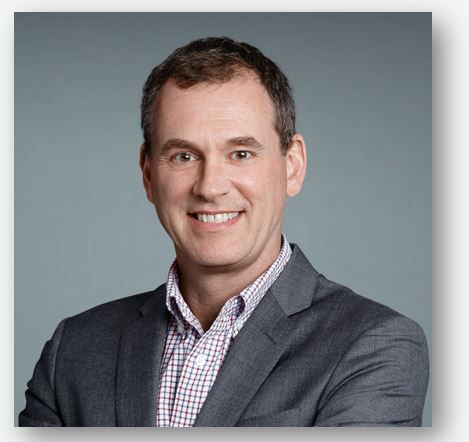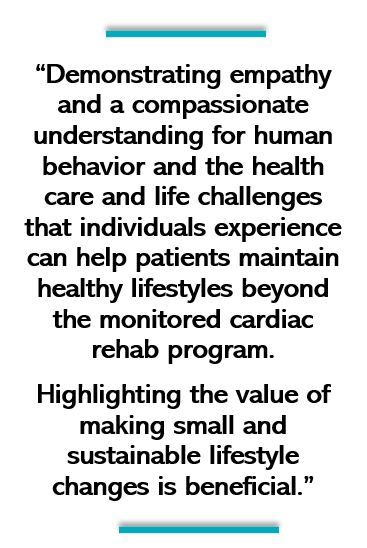- Clinical Technology
- Adult Immunization
- Hepatology
- Pediatric Immunization
- Screening
- Psychiatry
- Allergy
- Women's Health
- Cardiology
- Pediatrics
- Dermatology
- Endocrinology
- Pain Management
- Gastroenterology
- Infectious Disease
- Obesity Medicine
- Rheumatology
- Nephrology
- Neurology
- Pulmonology
Cardiac Rehab and Primary Care, with PM&R Specialist Jonathan Whiteson, MD

The World Health Organization says about cardiac rehabilitation that the aim is to “provide cardiac patients with the best possible conditions mentally, physically, and socially in order for them to resume or preserve a normal life.”
That is a very tall order.
But it is an order taken very seriously by the physical medicine and rehabilitation specialists who are central to the full breadth of a patient’s recovery, explains physiatrist Jonathan Whiteson, MD, associate professor of rehabilitation medicine and medicine at the New York University School of Medicine and member of the American Academy of Physical Medicine and Rehabilitation.
Patient Care® asked Whiteson, who is also vice chair, clinical operations and medical director, cardiac and pulmonary rehabilitation at NYU Langone Health’s Rusk Rehabilitation, to talk in more detail about the fundamentals of cardiac rehabilitation and then about the essential collaboration between physical medicine and rehabilitation (PM&R), and primary care as a patient progresses through recovery.
(Image courtesy of NYU Langone Health)
Patient Care: Would you offer a short primer on the focus of cardiac rehabilitation in general and then more specifically talk about the role of PM&R in this area?
Jonathan Whiteson, MD: Cardiac rehabilitation is focused on helping patients achieve optimum physical and emotional health and function following a cardiac event. Individuals qualify for cardiac rehabilitation following an acute cardiac event such as a heart attack, coronary revascularization (ie, stent placement, coronary bypass surgery), heart failure (with ejection fraction ≤35%), heart valve surgery, or heart transplant.
While some patients require inpatient rehabilitation due to unresolved medical issues and persistent functional limitations following the acute cardiac event, most patients are discharged from acute hospital care and can start outpatient cardiac rehabilitation within a few weeks, once medically cleared.
The cardiac rehabilitation program includes 36 sessions (2 to 3 times a week) of physician-monitored progressive aerobic exercise, cardiovascular risk factor (eg, diabetes, hypertension) monitoring and education, tobacco cessation, nutrition interventions, and psychosocial support. With a long-term perspective, cardiac rehab participants are provided with the tools to continue a lifelong heart-healthy lifestyle.
PM&R physicians—physiatrists—are the essential medical experts in value-based evaluation, diagnosis, and management of disabling cardiovascular diseases, including heart disease, cerebrovascular disease such as strokes, and peripheral arterial disease including intermittent claudication and dysvascular limb loss.
PM&R physicians—physiatrists—are the essential medical experts in value-based evaluation, diagnosis, and management of disabling cardiovascular diseases, including heart disease, cerebrovascular disease such as strokes, and peripheral arterial disease including intermittent claudication and dysvascular limb loss.
Physiatrists are indispensable leaders in directing cardiovascular rehabilitation and recovery throughout the continuum of care—from early mobilization programs in the intensive care unit, through the acute hospital setting, to inpatient acute or subacute rehabilitation facilities and into the community—and in preventing re-injury and secondary disease and optimizing function and quality of life.
Physiatrists are central to optimizing healthcare efficiency, patient health outcomes and function, early and throughout the trajectory of care following a cardiovascular event. They work collaboratively in an approach that fosters efficiency in care and results in decreased healthcare costs as well as hospital-acquired complications and readmissions.
Physiatrists who specialize in cardiac rehabilitation coordinate inpatient rehabilitation for patients with disabilities related to cardiac disorders. They also prescribe and supervise outpatient cardiac rehabilitation classes and collaborate in the long-term management of patients’ cardiovascular risk factors.
PC: What other specialties is PM&R most likely to engage with while working with a patient recovering from a cardiac or cardiovascular event?
Whiteson: Most often physiatrists collaborate with cardiologists and primary care / family medicine practitioners, and also with cardiac surgeons, neurologists, and vascular surgeons while working with a patient recovering an event. Optimal care and excellence in patient outcomes require a collaborative approach that fosters communication within the medical team and equally as important with patient, loved ones, and caregivers.
PC: The transition of a patient from a cardiac rehab program back to primary care is a critical one but not an all or none shift. What aspects of that transition do you feel are the most critical—for you as the PM&R specialist, for the primary health care professional who will resume care for the patient, and for the patient?
Whiteson: Cardiac rehabilitation is for life!

While patients can make a full/complete recovery during a cardiac rehab program, ongoing attention to lifestyle risk factors for cardiovascular disease is essential. Exercise plays a central and critical role in this ongoing effort. So as physiatrists in cardiac rehab we maintain ongoing ties with patients, their primary care practitioners, cardiologists, and other clinicians as the patient nears the end of their monitored cardiac rehab program and transition to independent exercise in the community.
Most critical to this transition is engaging the patient and family, empowering them, and encouraging a positive attitude towards lifestyle changes for risk factor modification including exercise, nutrition, sleep, and emotional wellbeing etc. A consistent and clear message from all care providers is also essential to achieve excellence in care.
Demonstrating empathy and a compassionate understanding for human behavior and the healthcare and life challenges that individuals experience can help patients maintain healthy lifestyles beyond the monitored cardiac rehab program. Highlighting the value of making small and sustainable lifestyle changes is beneficial.
PC: Would you leave Patient Care primary care clinician readers with 3 messages about providing ongoing secondary care for their patients recovering from a cardiac event ?
- Cardiac rehabilitation is essential in the short- and long-term health and wellbeing of individuals after a cardiac event and is essential in secondary prevention of potential future events.
- Physiatrists are ideal partners for primary care practitioners in the lifelong care and management of individuals with functional limitations and disabilities related to cardiovascular disease.
- A lifelong relationship between physiatrists, primary care practitioners and patients and their families is central to the triple aim of value-based care:
- efficient and fiscally responsible healthcare
- excellence in patient outcomes and population health
- an optimal patient experience
